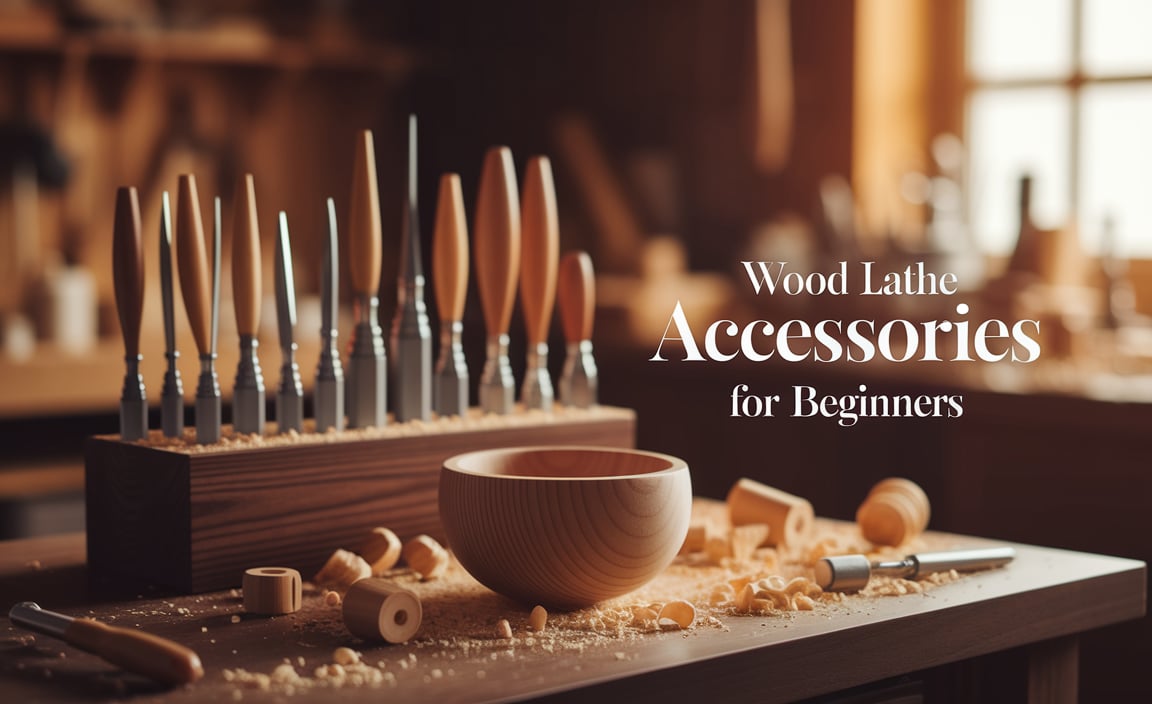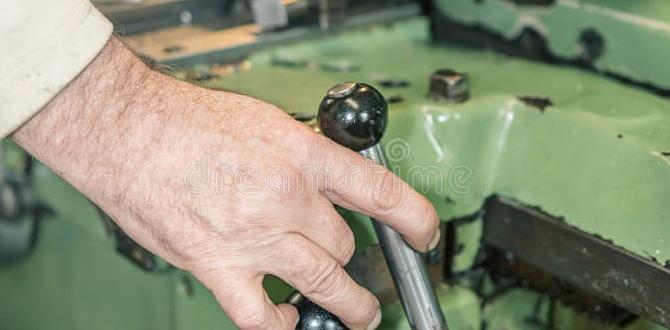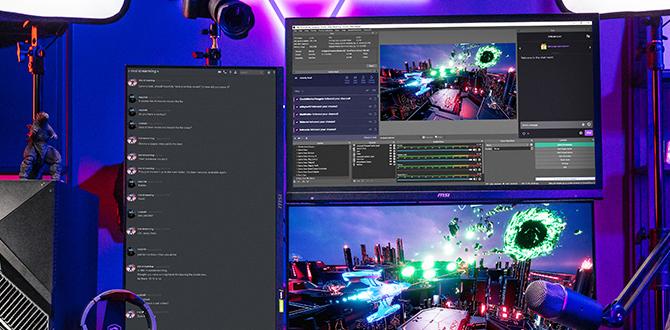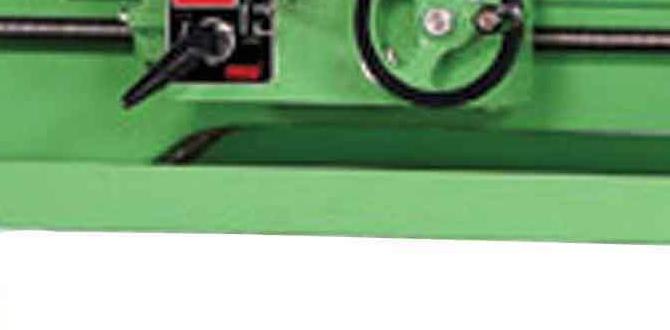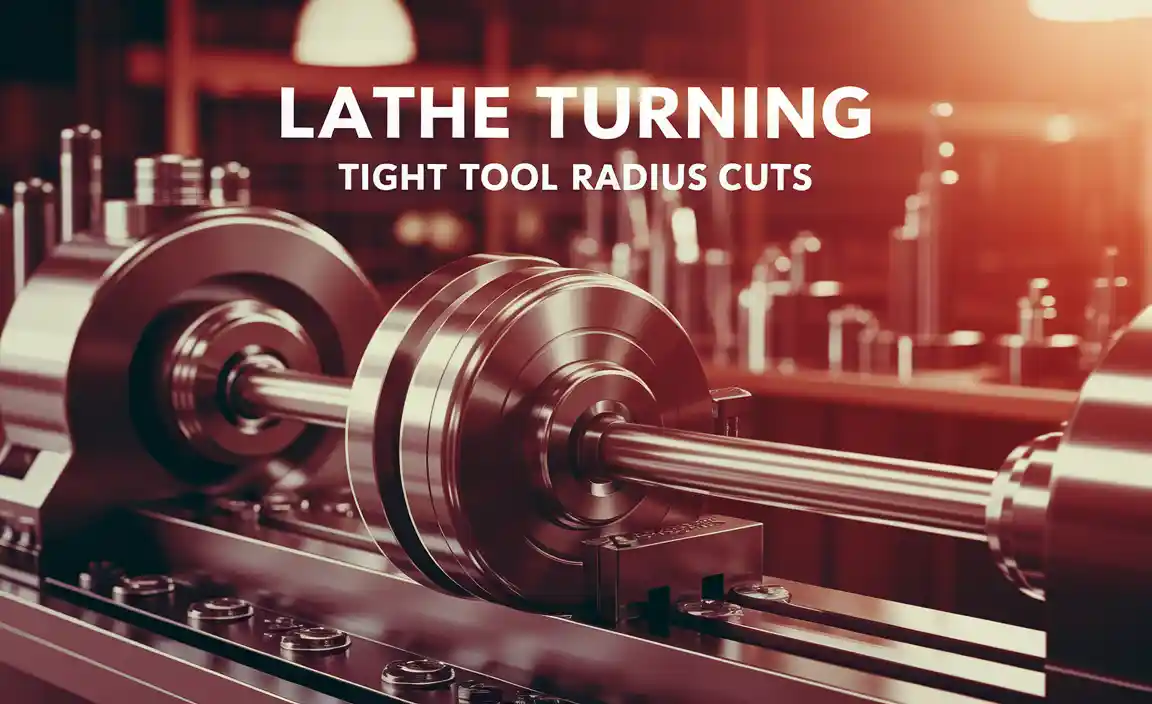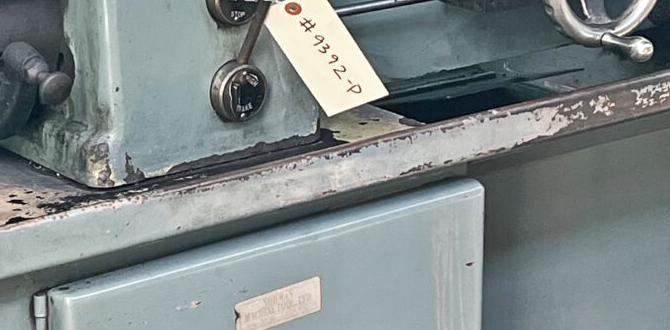Don’t break the bank for your first wood lathe! You can find a solid, reliable wood lathe with a stand for under $300 that’s perfect for beginners. This guide helps you spot the best value, focusing on essential features for safe, enjoyable woodworking projects.
Getting started with woodworking can feel overwhelming, especially when you see the prices of some tools. A wood lathe, in particular, seems like a big investment. Many beginners worry they won’t find a quality machine that fits their budget. It’s a common frustration: wanting to create beautiful turned pieces but feeling limited by cost. But take heart! With the right approach, finding a fantastic wood lathe with a stand for under $300 is absolutely possible. We’ll walk through what to look for, helping you make a smart choice and get turning sooner than you think.
Finding Your First Wood Lathe with Stand Under $300
So, you’ve decided to dive into the world of woodturning, and a wood lathe is calling your name. That’s fantastic! The good news is that you don’t need to spend a fortune to get a capable machine. For under $300, you can find wood lathes that are perfect for beginners. These might not be industrial powerhouses, but they offer solid performance for learning the ropes, making small bowls, spindles, and other wooden crafts. Let’s break down what makes a good beginner lathe and how to snag one without emptying your wallet.
When looking for a “wood lathe with stand under 300,” we’re really searching for the best bang for your buck. This means balancing essential features, build quality, and price. It’s about finding a tool that inspires confidence, not frustration, as you learn.
Key Features to Look For in an Affordable Wood Lathe
Not all lathes are created equal, especially in the budget category. Here are the crucial features to prioritize when you’re shopping for your first wood lathe with a stand under $300:
- Bed Length: This determines the maximum length of the workpiece you can turn. For most beginners, a bed length of around 16-20 inches is plenty to start with.
- Swing (Diameter): This is the maximum diameter of a workpiece the lathe can turn. It’s measured from the bed to the center of the headstock. A swing of 10-12 inches is common and suitable for many beginner projects.
- Motor Power: Look for at least 1/2 horsepower (HP). While many budget lathes are around this mark, some might be slightly less. More power means it can handle slightly larger or harder woods without bogging down.
- Spindle Threads: Standard sizes are important for attaching chucks and faceplates. Common sizes are 1″ x 8 TPI or 2 Morse Taper (MT2).
- Tool Rest & Post: A sturdy tool rest is vital for supporting your chisels. Ensure it slides smoothly and locks firmly in place.
- Tailstock: The tailstock supports the other end of your workpiece. It should be easy to move and lock down. Look for one that can accept a drill bit for hollowing out bowls or drilling dowels.
- Stand: For a “wood lathe with stand under 300,” the stand is a key part of the package. It should be stable and at a comfortable working height. Some stands are integrated, while others are simpler metal frames.
- Variable Speed: This is a fantastic feature to have, allowing you to adjust the rotation speed based on the workpiece size and type of wood. While not always standard on the cheapest models, some offer a few speed settings.
Why a Lathe with a Stand is Important for Beginners
When you’re on a tight budget, you might be tempted to buy just the lathe headstock and build your own stand. While that’s an option for experienced woodworkers, for beginners, a lathe that comes with a stand offers significant advantages:
- Stability: A properly designed stand provides a stable platform, reducing vibration. This is crucial for safety and for achieving smooth, controlled cuts.
- Ergonomics: A good stand sets the lathe at a comfortable working height, reducing fatigue and strain during long turning sessions.
- Convenience: Everything is ready to go right out of the box. You can set it up and start turning without needing to spend extra time and materials designing and building a custom stand.
- Space-Saving: Many budget lathe stands are also designed to be relatively compact, which is ideal for home workshops with limited space.
Top Picks for a Wood Lathe with Stand Under $300 (or Very Close)
Finding the perfect wood lathe with a stand strictly under $300 can involve some strategic shopping, often involving sales or looking at slightly older, but still very capable, models. New models often hover just above this mark, but with a bit of patience, you can find great deals. Here are some popular brands and types that often fall into or close to this price range, and what to expect:
1. Harbor Freight Central Machinery Mini Lathes
Harbor Freight is a go-to for many budget tool shoppers, and their Central Machinery mini lathes are no exception. While their models can change, they often have options that come with a stand and fit the under-$300 budget, especially during their frequent sales.
What to Expect:
- Typically around 10-12 inch swing and 16-18 inch bed length.
- Motor power usually around 1/2 HP.
- May have a few fixed speed settings or, in some cases, a belt-driven variable speed system.
- The included stand is often a simple metal frame but provides adequate stability for beginner work.
- Quality can be inconsistent, so reading reviews and checking the machine in person if possible is wise.
Pros:
- Very affordable, often falling well under $300, especially on sale.
- Readily available.
- Parts and accessories are usually easy to find.
Cons:
- Build quality can be basic.
- Motor power may be limited for tougher jobs.
- Vibration can be an issue if not properly secured or if the stand isn’t heavy enough.
2. Delta Electronics Benchtop Lathes (When on Sale)
Delta is a well-respected brand in the woodworking tool industry. While their larger lathes are more expensive, their benchtop models, when paired with a compatible stand (sometimes sold separately or as a package), can sometimes dip into the lower end of your budget during major sales events.
What to Expect:
- These are often larger than a typical “mini” lathe, offering a bit more capacity.
- You might find models with a decent 12-inch swing and 18-20 inch bed.
- Motor power is usually 1/2 HP or more.
- Better build quality and smoother operation than the cheapest options.
- The stand might be a more robust metal construction.
Pros:
- Reputable brand, generally better quality and durability.
- Smoother operation and less vibration.
- Potential for slightly better performance.
Cons:
- Rarely found new with a stand for under $300; requires significant sales or looking at used models.
- Stand might be an additional purchase if not bundled.
3. Grizzly Industrial Benchtop Lathes (During Promotions)
Grizzly is known for offering good value for money in the tool market. Similar to Delta, their benchtop lathes, particularly older or slightly less feature-rich models, can go on sale. If you find a package with a stand, it’s worth considering.
What to Expect:
- Good build quality for the price point.
- Specifications similar to Delta benchtop models (12-inch swing, 18-20 inch bed, 1/2 HP motor).
- Some models might offer basic variable speed control, which is a huge plus.
- The included stands are generally sturdy.
Pros:
- Excellent value when on sale.
- Strong build quality for this price bracket.
- Often good customer support and parts availability.
Cons:
- Similar to Delta, new models with stands under $300 are rare; look for sales or refurbished units.
4. Ryobi Benchtop Lathes (Less Common with Stand)
Ryobi is popular in the DIY and home workshop space. While they offer benchtop tools, it’s less common to find a Ryobi wood lathe that comes with a dedicated stand bundled for under $300. You might find just the lathe headstock within budget, requiring a separate stand purchase, or need to catch a rare sale.
What to Expect:
- Focus is often on portability and ease of use for smaller projects.
- Specifications can vary, but expect a smaller swing and bed length compared to dedicated woodworking brands.
- Motor power might be on the lower end (e.g., 1/3 HP).
Pros:
- Often user-friendly for beginners.
- Good availability in big box stores.
Cons:
- Rarely includes a stand in this price range.
- Less power and capacity for larger projects.
- May not be as durable for heavy use.
5. Shop Fox (Sales and Smaller Models)
Shop Fox offers a range of woodworking machinery, and some of their smaller benchtop lathes might fit your budget during promotions, especially if they don’t include a heavy-duty stand, or if it’s a very basic one.
What to Expect:
- Decent build quality, often comparable to Grizzly.
- Specifications usually include 1/2 HP motors, 10-12 inch swing, and 16-18 inch bed length.
- May or may not include a stand within the $300 price point.
Pros:
- Good reliability and performance for the price.
- Parts are generally accessible.
Cons:
- Finding one with a stand under $300 new is challenging and relies heavily on sales.
The Used Market: A Goldmine for Budget Lathes
Don’t overlook the used market! Many woodworkers upgrade and sell their older, perfectly functional lathes. This is where you have a real shot at finding a high-quality machine with a stand for well under $300.
Where to Look:
- Craigslist/Facebook Marketplace: Local listings can be fantastic for finding deals. Be ready to act fast and inspect machines in person.
- Garage Sales & Estate Auctions: You never know what treasures you might find.
- Woodworking Forums & Clubs: Many experienced woodturners sell their gear through these channels.
Tips for Buying Used:
Always inspect the lathe in person if possible. Check for:
- Smoothness: Does the headstock spin freely without rough spots? Does the tailstock slide smoothly?
- Alignment: Are the headstock and tailstock aligned properly? (You can test this by extending the tailstock and seeing if it lines up with the headstock spindle).
- Damage: Look for cracks, dents, or signs of abuse.
- Complete Parts: Does it come with the tool rest and post? Does the stand seem sturdy?
- Motor: Can you hear it run? Does it sound healthy?
Understanding Lathe Specifications: What it All Means
When you’re looking at specs for a wood lathe, a few terms pop up repeatedly. Knowing what they mean will help you decide if a machine is right for your needs.
For example, when reading about a typical budget lathe, you might see:
- Motor: 1/2 HP, 120V, 60Hz
- Speeds: 4 Sets (e.g., 740, 1100, 1600, 2200 RPM)
- Swing over Bed: 10 inches
- Swing over Tool Rest: 7.5 inches
- Bed Length: 16 inches
- Spindle Threads: 1″ x 8 TPI
- Spindle Bore: N/A (for wood lathes, usually not bored through)
- Tailstock Taper: #1 Morse Taper (MT1)
Let’s break these down:
- Motor:
- The heart of the lathe. 1/2 HP is a good starting point for smaller projects. 120V means it plugs into a standard household outlet.
- Speeds:
- This tells you how fast the spindle rotates. Lower speeds (like 740 RPM) are safer for larger or unbalanced pieces (green wood, large bowls), while higher speeds (like 2200 RPM) are good for smaller spindles and finishing cuts. “4 Sets” usually means you change the belt position to get different speeds.
- Swing over Bed:
- This is the maximum diameter of wood that can fit. A 10-inch swing means you can turn pieces up to 10 inches in diameter, measured from the bed’s center line.
- Swing over Tool Rest:
- This is usually less than the swing over the bed. It’s important because your tool rest needs to be closer to the workpiece. A 7.5-inch swing here means your maximum for comfortable turning is likely less than the stated swing over the bed.
- Bed Length:
- The distance between the headstock and tailstock centers. 16 inches allows for workpieces up to that length.
- Spindle Threads:
- “1” x 8 TPI” is a very common thread size for chucks and faceplates. It means the spindle is 1 inch in diameter with 8 threads per inch.
- Tailstock Taper:
- “#1 Morse Taper (MT1)” or “#2 Morse Taper (MT2)” refers to the type of cone used to hold accessories like drill chucks or spur centers. MT2 is more common and robust on larger lathes, but MT1 is perfectly fine for smaller machines.
Setting Up Your New (or New-to-You) Lathe Safely
Even the most affordable wood lathe needs to be set up correctly to ensure safety and good performance. This is where Lathe Hub emphasizes caution and precision.
Here’s a general guide to getting your lathe ready:
- Assembly: Carefully follow the manufacturer’s instructions for assembling the stand and mounting the lathe headstock and tailstock. Ensure all bolts are tightened securely.
- Placement: Position the lathe on a stable, level surface. Avoid placing it on carpet if possible, as this can absorb vibrations and cause instability. A solid concrete floor is ideal.
- Leveling: Use shims if necessary to ensure the lathe bed is perfectly level. This is critical for accurate turning and to prevent issues with tailstock alignment.
- Secure the Stand: If the lathe stand has mounting holes, consider anchoring it to the floor or a heavy workbench for maximum stability. This can be done with lag bolts or heavy-duty brackets.
- Motor Check: Ensure the motor is properly connected and the belt guard is in place. Check the belt tension – it should be snug but not overly tight.
- Tool Rest Position: Before turning on the machine, adjust the tool rest so it’s close to the headstock spindle (about 1/8 to 1/4 inch away) and at the same height as the center line.
- Tailstock Alignment: With the tailstock extended and locked, check its alignment with the headstock center. It should line up perfectly to avoid taper issues when drilling or using live centers.
For more in-depth guidance on setup and safety, always consult official resources. For instance, the <a href="https://www.woodturnersguild.

